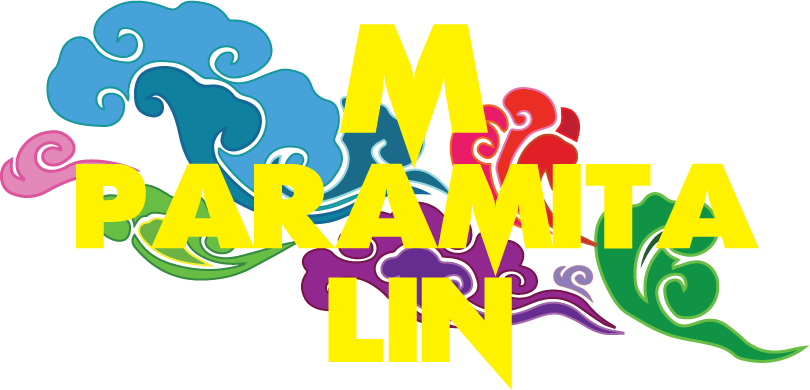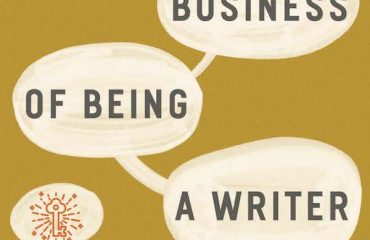
Hong Kong, 1980. A British police officer minutes away from being arrested by colleagues for sex crimes is found dead in his locked bedroom. There are multiple wounds to his chest; his used service revolver by his side. There’s only one possible conclusion: suicide. Yet a painstaking reinvestigation uncovers a different story: one involving a secret pedophile ring servicing the city’s most powerful men, high-level cover-ups, international geopolitics and the involvement of a secretive unit of police officers tasked with tracking down and arresting homosexuals—the Witchhunters. The operation ultimately resulted in the tragic death of police inspector John MacLennan—a watershed moment leading to the eventual decriminalization of homosexual acts in Hong Kong in 1991. For decades, many people have suspected that the young officer died because of information he possessed. This book reveals for the first time what MacLennan knew. (from the publisher)
As fans of true-crime stories, I was very excited to get a chance to speak to Nury Vittachi on the phone about his new book with Simon J. Blake, The Witchhunters: Scandal, Secrets, and a Death that Shocked Hong Kong. Now, is that a title or what?
The delightful Nury is especially well-known (or dare we say notorious) in Asia, and his work includes popular newspaper columns, non-fiction books, and fiction for both adults and kids. Nury has been writing since the early 1990s, and many older folk like me will remember his Lai See columns, which often caused many heated conversations among readers.
In our interview, Nury talks about how he came across the death of John MacLennan and how he and his writing partner Simon pieced the entire book together. (The interview has been condensed and edited for clarity and readability.)
How did you stumble upon this story?
There was a mature student [Simon J. Blake] in my writing class and he said he’d joined the class to tell one story. I often find in creative writing classes, there are some people who want to be writers in general and others who have a specific story to tell. He was in that second category, and it turned out he was a former CID officer–so criminal investigation officer–and the story he wanted to tell was about a cold case.
So I made friends with him, and I did tell him eventually that true crime is the hardest thing to write for several reasons, one is that nonfiction these days has to be told with all the drama and colour of novel-writing, but everything has to be true. And if it’s true crime, there’s also some legal implications because you’re making accusations about people. I said, “For a beginning writer like you, you shouldn’t even try it.” He said he agreed, and he said that’s why he wanted to work with me on the book.
I was reluctant at first, but I worked with him for a while, and it turned out really well. We worked really well together, and I loved the story, I thought it was really powerful, and so that’s how it all started.
How did you decide on the narrative structure of the book?
We decided to start with the official version of the death, which is suicide, and then go back to the beginning and tell the story chronologically and then end the book with the real story of the death. It gives the reader a nice, exciting beginning and takes the reader gently through the events.
What was the initial process of gathering information and researching like?
[Simon] arrived literally with boxes and boxes of the papers. Files, government documents, court transcripts, even handwritten letters. As an investigator, he’s used to digging up things, so it was a perfect mix, really, an investigator who digs and a writer who puts all the ideas into an understandable form.
Did you do any additional investigation?
We got a forensic bullet track analysis, we re-interviewed original witnesses, so we did a lot of re-investigating as well, it’s not just going through the old cuttings. In fact, the heart of the case was an incident where a unit of police investigators tried to set up the victim to prove that he was gay, and so we found the guy who was being used to set up the man, and he refused to participate. He didn’t go ahead. But he remembered clearly all the details because it was so upsetting to him, and in fact, he’d written things down and he’d written to other people about it. He was known as–in the original case–as Inspector XYZ because basically, he was a gay police officer who was set up to entrap another gay police officer, the man who eventually died. So we spent a lot of time talking to this gentleman, whose name is Mike Fulton.
How did you deal with reluctant witnesses?
One thing we found is that you have to do everything face to face, if at all possible. Because if you send out an email, they just won’t reply or they’ll reply negatively. Whereas if you meet them, they might say to your face, “Look, I don’t want to talk about this” but you know, you just spend time talking to them and building a relationship and then they’ll talk. One of the people involved in the case was Elsie Tu, she was over a hundred years old when we started, and she gave us some of the letters she’d written at that time, which were really useful and really built up this detail of the scene.
I’m one of those who encourages people to be very open. For example, I’ll say “I’ll show you the chapter I’m writing and you can see it after I’ve done the writing” and a lot of journalists won’t do that. I think building up relationships is really important. That does include making the notes and going back and saying “Look, this is what I’m going to say.” I have a rule called “No surprises” and if you tell the interviewee that “Look, I’m not going to surprise you with what I write, I’m going to show you before it’s printed”, it really, really helps. People trust you because they know what’s going to be in print before the reader does, and that’s a great way to avoid lawsuits as well!
Was there a defining moment that made you change your mind about the suicide?
There were a couple of those moments. One in particular was the bullet track analysis: when you shoot yourself in the heart, you turn the gun around, you put your thumb on the trigger, and the angle of the bullet is always upwards through the heart. When somebody shoots you, they tend to hold the gun level with their eye line and the bullet track’s trajectory is downwards. Now, there were five bullets fired in this case, and all five had downward trajectories, so it looked like someone was shot, and as he was falling, he was shot again and again, and so the trajectories are increasingly downwards. Now if you’re bent over a gun, the trajectory is always upwards. We know where the bullets landed because you can see the dents in the wall, and all the trajectories are downwards. So that was a moment that made me think, “Wow.”
I can tell you about another good moment: Simon managed to get hold of the–the building where John died or was killed has been knocked down–but Simon managed to get hold of an identical door lock and took it to a source who was expert in these things, who showed how you could make it look like the door was locked from inside while standing from outside. And I remember the moment where he brought this door lock to one of our meetings and said, “Watch this” and he showed how the door could be completely locked and the handle wouldn’t move but in fact, you were on the outside. So that was a really powerful visual moment.
Did you bump into any obstacles while writing or investigating?
There were some obstacles, one of which was we both have a good relationship with the Hong Kong police. He was a former CID officer and as a reporter, I’ve got a good relationship with them. We were worried that people would see this negatively, which is unfair, really, because obviously those police officers involved retired a long time ago.
Already, we have had letters and emails from old police officers saying “It was a suicide, didn’t you read the case file?” Of course we read the case file, that’s where we started all of this!
Did you have lawyers go over the manuscript? What was that process like?
We had lots of lawyers go over the book, they literally went over every sentence. They took a long time doing it, too. It was very carefully lawyered, which is why there are a lot of things not in the book! The first draft was a bit different from the last draft. We were frustrated many times because the lawyers said “Take this out, take this out” and we did argue sometimes that we can provide strong sources for these facts, and they did listen to us, so there was a bit of back and forth.
They’ll say, “What’s the source for this fact, what’s the source for that fact” and then, you know, it’s hard work because then you have to go through a pile of paper which is literally taller than I am and find the one memo or the one document or the one court transcript that is the backing for that particular fact. We tried very hard to be authentic, so for example, if a sentence says “It was a cold, rainy Tuesday morning when John stepped out of this office”, we checked the weather for that date, and so on, what was playing on the radio, we had to try and find out what was the playlist for that week. It was really hard work. It’s like a PhD dissertation; every fact has to have a source.
Did you come across anything unexpected in the course of writing the book?
I guess the main thing was that when we started, we were on different sides. I was convinced that it was a good story but it was actually a suicide, and the CID guy was sure it was a murder. It took literally months, maybe half a year, before I started to think, “Well actually, there a lot of suspicious circumstances here” and I think the fact that we disagreed with the conclusion all the way along really helped because it forced us to be very factual and not conjecture about things. I still think that even you believe it was a suicide, it’s still an amazing story because it involves two geopolitical powers and a guy caught in the middle. So the heart of the story is that Britain wanted China to allow Hong Kong to stay British, and China said no, it’s too lawless and corrupt. And Britain said no, it’s not lawless and corrupt, and the governor issued a rule to crack down on crime within the government. And part of the crackdown was this unit which found homosexuals, which is a terrible thing when you think about it–a unit paid by taxpayers to go and hunt down homosexuals!
And so in that sense, it’s a good story, and even if you don’t believe our conclusion, it’s still the story of a guy who was driven to suicide by geopolitical events over which he had no control.
The Witchhunters: Scandal, Secrets, and a Death that Shocked Hong Kong is out now!



